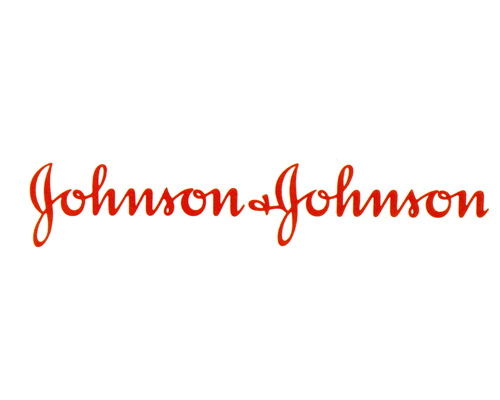强生公司 (JNJ.US) 2025年第三季度业绩电话会
文章语言:
简
繁
EN
Share
Minutes
原文
会议摘要
Johnson & Johnson reported robust Q3 2025 financial results with 5.3% operational sales growth, driven by double-digit gains in key brands. The company highlighted strategic initiatives, including the separation of its orthopedics business to focus on high-growth areas like oncology, immunology, and neuroscience. Notable regulatory milestones and investments in manufacturing and innovation were also emphasized, positioning the company for accelerated growth and achieving long-term targets.
会议速览
Johnson & Johnson's Q3 2025 earnings call discussed business performance, growth drivers, financial results, cash position, capital allocation priorities, and an update on 2025 guidance with key milestones for 2026. The presentation acknowledged partnerships and included forward-looking statements with associated risks and uncertainties. A question and answer session with senior executives was planned to address further inquiries.
Johnson & Johnson achieved 5.3% operational sales growth in Q3, exceeding $15 billion for the second consecutive quarter. The company demonstrated resilience by delivering double-digit growth across 11 brands, countering skepticism about growth post-stellata exclusivity loss. Innovation and a robust portfolio accelerated progress, showcasing the power of a relentless focus on advancement.
Johnson & Johnson highlights its strategic shift towards high-growth areas like oncology, immunology, neuroscience, and cardiovascular surgery, showcasing significant sales growth and innovation. The company also announces the separation of its orthopedics business to enhance focus and investment in core growth areas, aiming to deliver greater impact and shareholder value.
Worldwide sales reached $24 billion, with a 5.4% increase. Key growth drivers included innovative medicines in oncology, immunology, and neuroscience, alongside Medtech's cardiovascular, surgery, and vision segments. Acquisitions positively impacted growth, while biosimilar competition and China VBP posed challenges.
Announced intent to separate orthopedic business; noted growth in hips and knees; discussed Q3 financials including cost of products sold, R&D expenses, and tax rate impacts; highlighted strong R&D investment and adjusted income margins by segment.
Johnson & Johnson highlights Q3 momentum in key markets, pipeline advancements, and strategic focus on high-margin growth. The company reaffirms its commitment to disciplined capital allocation, emphasizing organic growth over speculative acquisitions. Announces plans for an orthopedics business separation aimed at enhancing strategic focus and shareholder value, with a targeted completion within 18 to 24 months. The separation is expected to boost top-line growth and margins, while maintaining the dividend and ensuring a strong capital structure for the orthopedics business post-separation.
Johnson & Johnson announces revised full year guidance, highlighting increased operational sales growth, margin improvement, and commitment to US-based innovation and manufacturing, including significant investments in North Carolina facilities.
Johnson & Johnson anticipates FDA approvals for innovative medicines, including subcutaneous ribroast for lung cancer and kalita for depression. They plan to expand Trem FAA's label for arthritis and present data for riber van at ESMO. In Medtech, progress continues with the otava robotic surgical system. Cardiovascular products, like the dual energy thermocool catheter, are under regulatory review. The company forecasts strong growth in 2026, driven by market focus, new product launches, and margin improvements, with potential revenue and earnings per share exceeding current consensus.
Johnson & Johnson announced the separation of its orthopedic division into a standalone company, aiming to drive growth and innovation in high-demand medical sectors. The decision reflects a strategic portfolio management approach, focusing on breakthrough innovations and prioritizing areas with significant medical needs. The new company, led by an industry veteran, is poised to capitalize on the growing orthopedics market, fueled by demographic trends. Johnson & Johnson remains committed to delivering transformative healthcare solutions, with a clear vision for accelerated growth and enhanced patient care.
A discussion unfolds on potential margin improvements and growth strategies for a medtech division post-separation. The conversation emphasizes the focus on high-growth markets, portfolio optimization, and the commitment to achieving best-in-class performance in the medtech sector, while addressing concerns about margin targets and policy dynamics affecting new launches.
A discussion highlighted ongoing collaboration with the administration on healthcare priorities, including innovation, manufacturing investment, and maintaining leadership in life sciences. Plans to invest in U.S. manufacturing were announced, aiming to produce all advanced medicines domestically. Optimism was expressed for reaching common ground in future discussions.
Discusses the effect of foreign exchange as a tailwind on growth and earnings, comparing reported and operational bases, with emphasis on analysts' inclusion of FX impacts in consensus forecasts.
An investment analyst poses a broad question about systemic issues, seeking a comprehensive overview of current challenges and opportunities in the market.
Discusses strategic capital allocation focusing on accelerating growth in innovative medicines and medtech, highlighting new product launches, pipeline investments, and expansion in robotics and electrophysiology, aiming for sustainable growth and achieving Erb targets.
The discussion emphasizes the company's strategy of focusing capital on strengthening its pipeline and portfolio to achieve high-end growth targets without requiring substantial additional funds. It highlights successful smaller acquisitions, such as Lexeo and icot rekindle, which have proven to be significant investments, turning into billion-dollar platforms due to the company's competitive advantage in scientific expertise and rapid product development.
Discussed robust growth in edqm brands and new launches, focusing on trephina's success in Crohn's disease and ulcerative colitis, with projections of sustained momentum into the decade. Darzalex and other key brands are driving double-digit growth, complemented by pipeline assets like T FIA and ribavirin for non-small cell lung cancer, showcasing strong market opportunities and value for patients.
The dialogue outlines promising growth in medical innovations, including a subcutaneous dosage form with potential as a $5 billion asset, new cancer treatments for head and neck, colorectal, and bladder cancers, and advancements in medtech with standout performances in electrophysiology, vision, and surgery, highlighting the launch of OTAVA and strong growth in wound closure and biosurgery.
The dialogue highlights Johnson & Johnson's impressive sales growth, emphasizing the acceleration in growth and the company's confidence in exceeding initial projections. Despite challenges such as erosion and discounting, the company foresees a new era of accelerated growth driven by its robust portfolio and promising pipeline, with specific mentions of progress in electrophysiology and pipeline advancements.
Discussion on upcoming phase 2 data for anti-tau antibody, expectations for results, and possibility of supporting accelerated approval or needing a phase 3 trial.
The dialogue discusses the anticipated Phase II study data expected within the year, highlighting cognitive and neuroimaging endpoints. It also addresses the impact of reserve adjustments on Medtech growth, stating no significant materiality.
A company discusses positive feedback from doctors on a new bladder cancer treatment, emphasizing its seamless integration into practice and high response rates. Anticipating a J code for better reimbursement, they highlight upcoming clinical trials and regulatory milestones to broaden the product's market, aiming for significant sales growth by 2028.
A comprehensive development program addresses non-muscle invasive and muscle invasive bladder cancer, featuring phase II studies on BCG-experienced, BCG-nonresponsive, and BCG-relapsed patients. Neoadjuvant context studies using in lexo with PD-1 antibodies show promising results in achieving pathological complete response. The program aims to improve outcomes for high-risk non-muscle invasive and muscle invasive disease patients.
Discussion covers a groundbreaking device delivering targeted therapy for bladder cancer, with high response rates. Also addressed is the market's sequential strength in a summer quarter, attributed to a resurgence in core medtech markets, and the potential strategic benefits of a spin-off, including capital structure optimization for future growth in key business areas.
Solid performances in orthopedics, particularly in hips, knees, trauma, and spine, contributed to the strong Q3 results. Vision and cardiovascular segments continued to grow, with vision driven by intraocular space advancements. The focus remains on enhancing the portfolio in vision, cardiovascular, and robotic surgery, aiming to lead the medtech industry.
A query on strategic differentiation between two therapies, Icopro Era and Trim FAA, with similar applications, seeks clarity on market positioning.
Icora Kra, an oral pill, is poised to revolutionize psoriasis treatment by offering complete skin clearance with a favorable safety profile, addressing unmet market needs and competing effectively against biologics. Its distinct positioning alongside Truvia promises significant growth opportunities, supported by upcoming publications in high-impact journals.
Johnson & Johnson reports a strong third quarter, highlighting accelerated growth in oncology, immunology, neuroscience, and cardiovascular surgery. The company emphasizes innovation and pioneering treatments, concluding the earnings call with gratitude for investor interest.
要点回答
Q:What are the key topics covered in the Johnson & Johnson third quarter 2025 earnings conference call?
A:The key topics covered in the Johnson & Johnson third quarter 2025 earnings conference call include business performance and growth drivers, operational sales results, a discussion on the planned separation of the orthopedics business, and an overview of cash position, capital allocation priorities, and intended business separation milestones.
Q:How did Johnson & Johnson manage to achieve operational sales growth across its business despite the loss of exclusivity of Stellara?
A:Johnson & Johnson achieved operational sales growth across its business by delivering double-digit growth across 11 brands and remarkable growth in Tremfya and Metform, contributing to a stronger overall operational sales growth performance.
Q:What impact will the planned separation of the orthopedics business have on Johnson & Johnson?
A:The planned separation of the orthopedics business is intended to sharpen Johnson & Johnson's focus as a healthcare innovation leader, accelerate the shift of its portfolio to areas of greatest need and higher growth, including cardiovascular and robotic surgery.
Q:How has Johnson & Johnson's momentum been reflected in its performance across different therapeutic areas?
A:Johnson & Johnson's momentum has been reflected in its performance across various therapeutic areas, including oncology where Q3 operational sales grew nearly 20%, immunology where it has been a leader for 25 years, neuroscience, cardiovascular surgery, and vision, all of which show significant progress and growth.
Q:What are the highlights in the oncology field for Johnson & Johnson?
A:In the oncology field, highlights for Johnson & Johnson include operational sales growth of nearly 20% in Q3, the unrivaled competitiveness in multiple myeloma with the approval of Daratumumab in Europe for high-risk smoldering multiple myeloma, and the successful launch of Carvive T, the most successful car T launch ever with operational sales growth by more than Ed this quarter.
Q:What was the impact of FDA approval for a bladder cancer treatment?
A:The FDA approval for a bladder cancer treatment highlights Johnson & Johnson's capability in both innovative medicines and medical devices, as well as the potential for future growth with a targeted release platform projected to be another blockbuster treatment with at least $500 billion in annual peak year sales.
Q:What advancements have been made in the field of immunology by Johnson & Johnson?
A:In the field of immunology, Johnson & Johnson has been leaders for 25 years, with operational sales growth driven by new indications in inflammatory bowel disease and the approval of a subcutaneous formulation of Tremfya, the only Il-3 inhibitor to offer a fully subcutaneous regimen.
Q:What progress has been made in the cardiovascular portfolio?
A:In the cardiovascular portfolio, Johnson & Johnson has experienced operational sales growth of approximately 12%, with strong performance across various segments including atherosclerotic cardiovascular patients with shockwave technology, and electrophysiology with the mapping technology and success of the Impella CP heart pump.
Q:How has Johnson & Johnson been delivering groundbreaking innovation in surgery?
A:Johnson & Johnson has been delivering groundbreaking innovation in surgery by making progress on multiple fronts with surgical technologies, continuing the positive progress with Otava, and growing the biosurgery and wound closure segments driven by the adoption of latest innovations.
Q:What is the significance of the separation of the orthopedic business from Johnson & Johnson?
A:The separation of the orthopedic business from Johnson & Johnson signifies a strategic move to allow the new, standalone orthopedics company to be the largest and most comprehensive in its field with greater flexibility to extend its market leadership and focus on profitable growth opportunities.
Q:Which business segments experienced growth in the third quarter, and what were the reasons for this growth?
A:The business segments that experienced growth in the third quarter included innovative medicine, with sales growth of 5.3% due to continued strength of key brands and new launches despite stelara's impact; Medtech with worldwide sales growth of 5.6% driven by strong performance in cardiovascular surgery, vision, and other areas; and orthopedic business growth of 5.4%, with hips and knees returning to growth.
Q:What was the impact of currency translation on Johnson & Johnson's sales results?
A:Currency translation had an impact on Johnson & Johnson's sales results, with an approximate 640 basis point headwind from stelara and an approximate 1070 basis point headwind from currency translation, which offset some of the sales growth.
Q:What are the components of Johnson & Johnson's adjusted net earnings?
A:The components of Johnson & Johnson's adjusted net earnings include adjusted diluted earnings per share of $2.80, which represents an increase compared to the third quarter of 2024. Adjustments are made to exclude the impact of intangible amortization and special items.
Q:How did the recent acquisition of Cap Light contribute to Johnson & Johnson's performance?
A:The recent acquisition of Cap Light, which was part of the intracellular acquisition, contributed to Johnson & Johnson's performance with sales of $240 million and reflecting healthy sequential growth of 13 percentage points in the third quarter.
Q:What is the progress and expected outcome of the Daubert motions in the TAC litigation?
A:The progress in the Daubert motions in the TAC litigation involves the judicial process to reevaluate the scientific basis of mass tort plaintiff's claims against Johnson & Johnson. The expected outcome is to secure favorable rulings on the motions by the first quarter of 2026.
Q:What is the current strategy regarding capital allocation and acquisitions for Johnson & Johnson?
A:The current strategy for capital allocation and acquisitions involves generating $9 billion in free cash flow, maintaining a strong balance sheet, and using the funds to invest in innovation and return capital to shareholders. Johnson & Johnson plans to remain disciplined, opportunistically pursuing strategic high-value opportunities that utilize their expertise and deliver an appropriate return for the risk taken. They do not intend to rely on large transactions to drive growth and will not engage in speculative acquisitions out of desperation.
Q:How is the company managing the financial aspects and potential stranded costs associated with the separation?
A:The company does not expect any change to the Johnson & Johnson dividend and is mindful of the impact from stranded costs that are typically present in these types of transactions.
Q:What is the financial guidance provided for the full year and how does it compare to the previous guidance?
A:The company has increased operational sales guidance for the full year by approximately $300 million, with a projected range of 5% to 5.3% with a midpoint of $93.2 billion. Excluding the impact from acquisitions and divestitures, adjusted operational sales growth is expected to be in the range of 4.9% to 5.1%. Reported sales growth is now between 5.4% to 5.9% with a midpoint of $93.7 billion. The operating margin guide is an approximate improvement of 10 basis points for the full year. The projected net interest expense is between $250 million and $350 million of improvement, and the projected effective tax rate is in the range of 22% to 24% for the full year.
Q:What are the updated expectations for earnings per share and how do they compare to the previous guidance?
A:The expected adjusted earnings per share guidance has been reaffirmed at $10.85 with a range of $10.80 to $10.90, representing an 8.7% midpoint. The adjusted operational earnings per share guidance is now at $10.68, or 7% at the midpoint. The company also reiterates its elevated July earnings per share outlook, which includes the impact of the intercellular acquisition and higher tax rates.
Q:What are the projected milestones for the pipeline in innovative medicine and Medtech?
A:In innovative medicine, the company anticipates FDA approval for subcutaneous ribocastane for non-small cell lung cancer and for ketana in adjunctive major depressive disorder. A label expansion for tremor in spondyloarthritis of the knee is planned, with data presentation for ribocastane in head and neck cancer at ESMO. In Medtech, progress is made with the clinical trial for the Otava robotic surgical system, and regulatory submissions are planned for the dual energy thermocool smart touch SF catheter for cardiac arrhythmia in the US. Additionally, the company plans to continue rolling out Acuvue aspheric for astigmatism.
Q:What is the company's strategy for growth in innovative medicine and Medtech?
A:The company's strategy for growth in innovative medicine includes continued progress from recently launched products and anticipating a script approval for ilora in psoriasis. In Medtech, the company expects accelerated growth off this year's levels, focusing on higher growth markets and the adoption of newer products across all Medtech platforms. They also anticipate the launch of new products like the Shockwave C.I. Aero coronary IVL catheter and the Ticon pure C intraocular lens in the US, along with regulatory submissions for the Otava robotic surgical system.
Q:How does the company anticipate the revenue consensus for 2026 will be affected by the separation?
A:The company believes the current revenue consensus for 2026 is lower than their projection, which they expect to exceed Ed. Similarly, the adjusted earnings per share consensus of $10.43 is seen to have some upside, potentially as much as 5 cents. This commentary considers investments in new product launches and reflects an understanding of the legislative landscape, tariffs, foreign exchange rates, and procedural volumes.
Q:What are the company's views on the future and its confidence in the upcoming years?
A:The company is very confident in its ability to deliver accelerated growth despite challenges such as loss of exclusivity. They are focused on in-market brands and the continued progress from recently launched products. The company is anticipating script approval for ilora in psoriasis and accelerated growth in Medtech off this year's levels. They are also confident in their ability to manage the portfolio to position Johnson & Johnson to deliver breakthrough innovation. The company is optimistic about the future and looks forward to sharing further details regarding their guidance for 2026 during their Q4 earnings call in January.
Q:What factors may influence the company's margins and growth?
A:The company's margins and growth may be influenced by the mix of the business, with high growth cardio surgical being relatively high margin, and the potential for vision to contribute more than anticipated. Future muted impact is expected as higher growth profile businesses and margin improvement initiatives under Tim's leadership will take a few years to realize.
Q:What is the significance of separating the orthopedics business?
A:The separation of the orthopedics business is a significant step towards focusing on higher growth markets and aligning with the company's commitment to continuous portfolio optimization and value creation. It is a strategic move to shrink in order to grow faster in the medical technology sector, emphasizing the importance of best-in-class performance over size.
Q:How does the company view the potential impact of policy dynamics and MFM agreements?
A:The company views ongoing discussions with the administration as an opportunity to find common ground on important issues such as patient access to innovation, preventing foreign free riding on American innovation, maintaining leadership in life sciences, and investing in U.S. manufacturing to build middle-class jobs. Although no specific details are shared, the company remains optimistic and is working towards a resolution that benefits both the administration and the company.
Q:What is the company's approach to foreign exchange and extra week impacts?
A:The company's approach to foreign exchange considers the impact as a slight tailwind for both top-line and EPS growth. They assume that the effects of foreign exchange are already reflected in consensus forecasts. Similarly, the impact of the extra week is acknowledged as a lift across the board, but it is not factored into the reported or adjusted operational growth figures provided.
Q:What is the company's strategy for capital allocation and investment priorities?
A:The company's strategy for capital allocation focuses on sustaining acceleration in innovative medicines and pushing medtech towards 5 to 7% EBIT targets. Key investment priorities include a robust pipeline and portfolio, major blockbuster product launches, and growth opportunities in both pharmaceuticals and medtech businesses. The company aims to fuel growth without needing large amounts of money, with a focus on small, impactful deals and investments that align with their scientific expertise and the potential to create significant value.
Q:What are the growth drivers for the company's business?
A:The growth drivers for the company's business include Darzalex, orli USS, bravado, carvic tea, and the strength in new launches, notably trephina in Crohn's disease and ultrasonic colitis with 40% growth.
Q:What is the potential growth opportunity for Tresiba and Tregila?
A:The potential growth opportunity for Tresiba and Tregila is significant, especially in IBD (Inflammatory Bowel Diseases) as they are anticipating strong uptake with the subcutaneous induction dose, and 75% of stelara sales were in Crohn's and Ultram of colitis.
Q:What is the company's outlook on the use of Tresiba for treatment-resistant depression?
A:The company is optimistic about the future growth potential of Tresiba in treating patients with treatment-resistant depression and the potential expansion into new treatment centers.
Q:What are the anticipated benefits of the subcutaneous dosage form of a certain product?
A:The anticipated benefits of the subcutaneous dosage form include significant growth potential as a $5 billion plus asset, with the potential to address unmet patient needs in a more convenient and effective manner.
Q:What are the future growth prospects for Joaquin and Alexa?
A:The future growth prospects for Joaquin and Alexa include anticipated launches and approvals for bladder cancer, with a view to becoming a $500 billion plus asset for Johnson Johnson. Also, new data is expected to be presented for psoriasis and ultra-rare colitis.
Q:How does the company view the performance and potential of its Medtech business?
A:The company views the Medtech business with continued confidence and commitment to winning over the long-term, particularly in electrophysiology, where there has been a standout quarter with improvements in the US market. It also saw growth in the IOL category with significant share gains, and the business as a whole is bolstered by strong performance in various segments like wound closure and biosurgery.
Q:What are the company's expectations for sales growth and how does it plan to achieve higher levels?
A:The company expects to achieve higher levels of sales growth by continuing to improve upon the portfolio, which includes acquisitions that fortify the numbers. They also plan to address significant erosion with stelar, potential additional discounting in the innovative medicine portfolio, and continuing progress with electrophysiology and orthopedics businesses.
Q:What is the significance of the phase II data for the anti-tau antibody?
A:The significance of the phase II data for the anti-tau antibody is that it includes cognitive endpoints traditionally used for regulatory approval of medicines for Alzheimer's disease, along with important neuroimaging data looking at tau spread using Pet imaging. This data will be a decision-making point for the company.
Q:How does the company expect to meet its expectations for the $2 billion plus product by 2028?
A:The company expects to meet its expectations for the $2 billion plus product by 2028 through the initial launch in BCG (Bladder Cancer G) unresponsive, high-risk, non-muscle-invasive bladder cancer, demonstrating high complete response rates without the need for re-induction, and over half of responders remaining cancer-free at one year. They anticipate the J code for reimbursement come April of the following year, which will be a catalyst for uptake.
Q:What phase II studies are being conducted by the company?
A:The company is conducting phase II studies to address the non-muscle invasive bladder cancer population that is considered high risk.
Q:What is the anticipated outcome of the neoadjuvant studies mentioned?
A:The neoadjuvant studies are expected to show a higher percentage of patients completely free of disease, evidenced by a pathological complete response, which is anticipated to lead to better outcomes for patients with muscle invasive bladder cancer.
Q:What are the anticipated benefits of the new device?
A:The new device is anticipated to deliver a steady release of medicine for up to 12 months, offering sustained treatment benefits beyond the initial period and addressing the unmet need in bladder cancer.
Q:How does the company plan to use the performance improvements in the orthopedic business?
A:The company plans to use the performance improvements in the orthopedic business to enhance its competitive position and to contribute to the overall sequential improvements across all businesses.
Q:What are the key focus areas for the company moving forward?
A:The key focus areas for the company moving forward are vision, cardiovascular, and robotic surgery, with a particular emphasis on advancing the Otava soft tissue robotic system towards FDA submission in the first half of 2023.
Q:What is the company's strategy for positioning Icera in the market and how does it compare to other treatments?
A:The company plans to position Icera as a leading brand in the psoriasis treatment market, targeting a significant market expansion opportunity by bringing more patients into advanced therapies in the frontline setting. Icera is anticipated to set a new standard of care with its combination of complete skin clearance, a favorable safety profile, and the simplicity of an oral pill.
Q:What differentiates Icera and Truvia in the market and what are the company's expectations for their growth?
A:Icera and Truvia are expected to have unique and distinct positions in the market, with Icera positioned to be a significant asset for the company, as indicated by the 40% growth achieved in the quarter. Differentiation in market profiles is expected to allow both assets to continue significant growth, particularly given the high level of unmet need in the market.
Q:What upcoming publications and studies will provide further insight into the company's therapies?
A:Upcoming publications and studies will include more data on the A data for Icera, with back-to-back papers in prestigious journals such as the New England Journal and The Lancet. These studies will show placebo-controlled trials and comparisons with leading biologics in psoriatic diseases, providing further insight into the efficacy and safety of the company's therapies.

Johnson & Johnson
Follow





